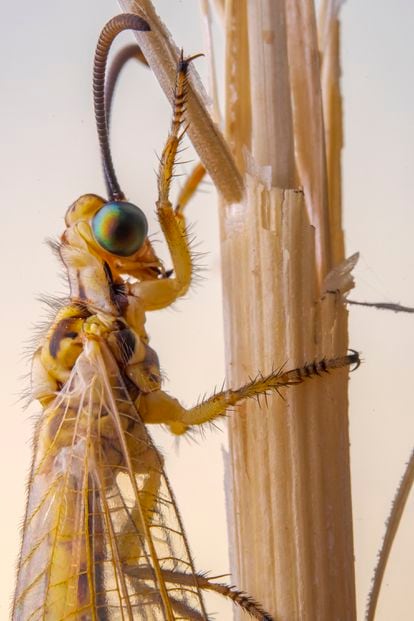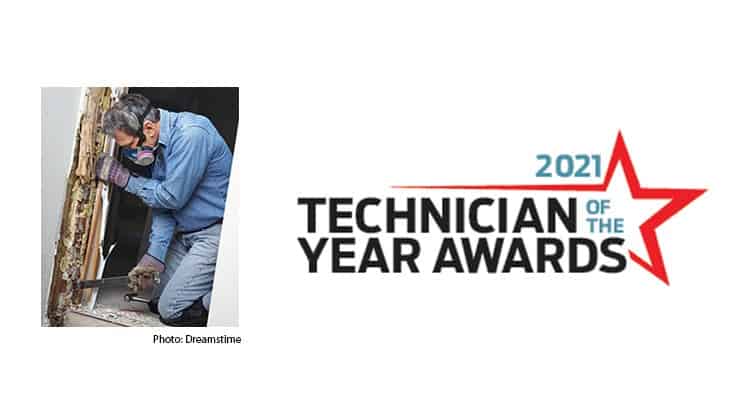Stork, N. E. How many species of insects and other terrestrial arthropods are there on earth? (2017). https://doi.org/10.1146/annurev-ento-020117.
Scudder, G. Insect Biodiversity: Science and Society—Google Books (Wiley-Blackwell, 2009).
Lami, F., Boscutti, F., Masin, R., Sigura, M. & Marini, L. Seed predation intensity and stability in agro-ecosystems: Role of predator diversity and soil disturbance. Agric. Ecosyst. Environ. 288, 106720 (2020).
Gallai, N., Salles, J. M., Settele, J. & Vaissière, B. E. Economic valuation of the vulnerability of world agriculture confronted with pollinator decline. Ecol. Econ. 68, 810–821 (2009).
Consoli, F. L., Parra, J. R. P. & Zucchi, R. A. Egg Parasitoids in Agroecosystems with Emphasis on Trichogramma (Springer Science, 2010).
Sánchez-Guillén, R. A., Córdoba-Aguilar, A., Hansson, B., Ott, J. & Wellenreuther, M. Evolutionary consequences of climate-induced range shifts in insects. Biol. Rev. 91, 1050–1064 (2016).
Google Scholar
Zalucki, M. P. et al. Estimating the economic cost of one of the world’s major insect pests, Plutella xylostella (Lepidoptera: Plutellidae): Just how long is a piece of string?. J. Econ. Entomol. 105, 1115–1129 (2012).
Google Scholar
Dornelas, M. & Daskalova, G. N. Nuanced changes in insect abundance. Science (80-). 368, 368–369 (2020).
Google Scholar
Didham, R. K. et al. Interpreting insect declines: Seven challenges and a way forward. Insect Conserv. Divers. 13, 103–114 (2020).
Greenwood, B. M., Bojang, K. & Whitty, C. J. M. Malaria. Lancet 365, 98 (2005).
Dangles, O. & Casas, J. Ecosystem services provided by insects for achieving sustainable development goals. Ecosyst. Serv. 35, 109–115 (2019).
Burkholder, W. E. & Ma, M. Pheromones for monitoring and control of stored-product insects. Annu. Rev. Entomol. 30, 257–272 (1985).
Google Scholar
Morris, R. F. Sampling insect populations. Annu. Rev. Entomol. 5, 243–264 (1960).
Strickland, A. H. Sampling crop pests and their hosts. Annu. Rev. Entomol. 6, 201–220 (1961).
Bannerman, J. A., Costamagna, A. C., McCornack, B. P. & Ragsdale, D. W. Comparison of relative bias, precision, and efficiency of sampling methods for natural enemies of soybean aphid (Hemiptera: Aphididae). J. Econ. Entomol. 108, 1381–1397 (2015).
Google Scholar
Osborne, J. L. et al. Harmonic radar: A new technique for investigating bumblebee and honey bee foraging flight. VII Int. Symp. Pollinat. 437, 159–164 (1996).
Zink, A. G. & Rosenheim, J. A. State-dependent sampling bias in insects: Implications for monitoring western tarnished plant bugs. Entomol. Exp. Appl. 113, 117–123 (2004).
Rancourt, B., Vincent, C. & De Oliveira, A. D. Circadian activity of Lygus lineolaris (Hemiptera: Miridae) and effectiveness of sampling techniques in strawberry fields. J. Econ. Entomol 93, 1160–1166 (2000).
Google Scholar
Binns, M. R. & Nyrop, J. P. Sampling insect populations for the purpose of IPM decision making. Annu. Rev. Entomol. 37, 427–453. https://doi.org/10.1146/annurev.ento.37.1.427 (1992).
Google Scholar
Portman, Z. M., Bruninga-Socolar, B. & Cariveau, D. P. The state of bee monitoring in the United States: A call to refocus away from bowl traps and towards more effective methods. Ann. Entomol. Soc. Am. 113, 337–342 (2020).
Montgomery, G. A., Belitz, M. W., Guralnick, R. P. & Tingley, M. W. Standards and best practices for monitoring and benchmarking insects. Front. Ecol. Evolut. 8, 579193 (2021).
Bick, E., Dryden, D. M., Nguyen, H. D. & Kim, H. A novel CO2-based insect sampling device and associated field method evaluated in a strawberry agroecosystem. J. Econ. Entomol. 113, 1037–1042 (2020).
Google Scholar
Wen, C. & Guyer, D. Image-based orchard insect automated identification and classification method. Comput. Electron. Agric. 89, 110–115 (2012).
Chen, Y., Why, A., Batista, G., Mafra-Neto, A. & Keogh, E. Flying insect classification with inexpensive sensors. J. Insect Behav. 27, 657–677 (2014).
Potamitis, I. & Rigakis, I. Novel noise-robust optoacoustic sensors to identify insects through wingbeats. IEEE Sens. J. 15, 4621–4631 (2015).
Google Scholar
Eliopoulos, P. A., Potamitis, I., Kontodimas, D. C. & Givropoulou, E. G. Detection of adult beetles inside the stored wheat mass based on their acoustic emissions. J. Econ. Entomol. 108, 2808–2814 (2015).
Google Scholar
Ärje, J. et al. Automatic image-based identification and biomass estimation of invertebrates. Methods Ecol. Evol. 11, 922–931 (2020).
Hobbs, S. E. & Hodges, G. An optical method for automatic classification and recording of a suction trap catch. Bull. Entomol. Res. 83, 47–51 (1993).
O’Neill, M. A., Gauld, I. D., Gaston, K. J. & Weeks, P. Daisy: An automated invertebrate identification system using holistic vision techniques. in Proceedings of the Inaugural Meeting BioNET-INTERNATIONAL Group for Computer-Aided Taxonomy (BIGCAT) 13–22 (1997).
Chesmore, E. D. Methodologies for automating the identification of species. in First BioNet-International Work. Gr. Autom. Taxon. 3–12 (2000).
Martineau, M. et al. A survey on image-based insect classification. Pattern Recognit. 65, 273–284 (2017).
Google Scholar
Silva, D. F., De Souza, V. M. A., Batista Geapa, K. E. & Ellis, D. P. W. Applying machine learning and audio analysis techniques to insect recognition in intelligent traps. in Proceedings—2013 12th International Conference on Machine Learning and Applications, ICMLA 2013. (2013).
Capinera, J. L. & Walmsley, M. R. Visual responses of some sugarbeet insects to sticky traps and water pan traps of various colors. J. Econ. Entomol., 71(6), 926–927 (1978).
Moore, A., Miller, J. R., Tabashnik, B. E. & Gage, S. H. Automated identification of flying insects by analysis of wingbeat frequencies. J. Econ. Entomol. 79, 1703–1706 (1986).
Riley, J. R. Angular and temporal variations in the radar cross-sections of insects. Proc. Inst. Electr. Eng. (IET) 120, 1229–1232 (1973).
Reed, S. C., Williams, C. M. & Chadwick, L. E. Frequency of wing-beat as a character for separating species races and geographic varieties of Drosophila. Genetics 27, 349 (1942).
Google Scholar
Mankin, R. W., Hagstrum, D. W., Smith, M. T., Roda, A. L. & Kairo, M. T. K. Perspective and promise: a century of insect acoustic detection and monitoring. Am. Entomol. 57(1), 30–44 (2011).
Drake, V. A. & Reynolds, D. R. Radar Entomology: Observing Insect Flight and Migration (Cabi, 2012).
Long, T. et al. Entomological radar overview: System and signal processing. IEEE Aerosp. Electron. Syst. Mag. 35, 20–32 (2020).
Drake, V. A., Hatty, S., Symons, C. & Wang, H. Insect monitoring radar: Maximizing performance and utility. Remote Sens. 12, 596 (2020).
Google Scholar
Brydegaard, M. & Jansson, S. Advances in entomological laser radar. IET Int. Radar Conf. https://doi.org/10.1049/joe.2019.0598 (2018).
Google Scholar
Jansson, S. Entomological Lidar: Target Characterization and Field Applications (Department of Physics, Lund University, 2020).
Malmqvist, E. From Fauna to Flames: Remote Sensing with Scheimpflug-Lidar (Department of Physics, Lund University, 2019).
Mankin, R. W., Hagstrum, D. W., Smith, M. T., Roda, A. L. & Kairo, M. T. K. Perspective and promise: A century of insect acoustic detection and monitoring. Am. Entomol. 57, 30–44 (2011).
Miller-Struttmann, N. E., Heise, D., Schul, J., Geib, J. C. & Galen, C. Flight of the bumble bee: Buzzes predict pollination services. PLoS ONE 12, 1–14 (2017).
Li, Y. et al. Mosquito detection with low-cost smartphones: Data acquisition for malaria research. arXiv:1711.06346 [stat.ML] (2017).
Mukundarajan, H., Hol, F. J. H., Castillo, E. A., Newby, C. & Prakash, M. Using mobile phones as acoustic sensors for high-throughput mosquito surveillance. Elife 6, 1–26 (2017).
Osborne, J. L. et al. A landscape-scale study of bumble bee foraging range and constancy, using harmonic radar. J. Appl. Ecol. 36, 519–533 (1999).
Smith, A. D., Riley, J. R. & Gregory, R. D. A method for routine monitoring of the aerial migration of insects by using a vertical-looking radar. Philos. Trans. R. Soc. London. Ser. B Biol. Sci. 340, 393–404 (1993).
Chapman, J. W., Smith, A. D., Woiwod, I. P., Reynolds, D. R. & Riley, J. R. Development of vertical-looking radar technology for monitoring insect migration. Comput. Electron. Agric. 35(2–3), 95–110 (2002).
Schaefer, G. W. & Bent, G. A. An infra-red remote sensing system for the active detection and automatic determination of insect flight trajectories (IRADIT). Bull. Entomol. Res. 74, 261–278 (1984).
Farmery, M. J. Optical studies of insect flight at low altitude. (Doctoral dissertation, University of York, 1981).
Farmery, M. J. The effect of air temperature on wingbeat frequency of naturally flying armyworm moth (Spodoptera exempta). Entomol. Exp. Appl. 32, 193–194 (1982).
Malmqvist, E. & Brydegaard, M. Applications of KHZ-CW lidar in ecological entomology. EPJ Web Conf. 119, 25016. https://doi.org/10.1051/epjconf/2016I11925016 (2016).
Google Scholar
Brydegaard, M. et al. Lidar reveals activity anomaly of malaria vectors during pan-African eclipse. Sci. Adv. 6, eaay5487 (2020).
Google Scholar
Malmqvist, E. et al. The bat–bird–bug battle: Daily flight activity of insects and their predators over a rice field revealed by high-resolution Scheimpflug Lidar. Roy. Soc. Open Sci. 5(4), 172303 (2018).
Google Scholar
Fristrup, K. M., Shaw, J. A. & Tauc, M. J. Development of a wing-beat-modulation scanning lidar system for insect studies. Lidar Remote Sens. Environ. Monit. 2017, 15. https://doi.org/10.1117/12.2274656 (2017).
Google Scholar
Hoffman, D. S., Nehrir, A. R., Repasky, K. S., Shaw, J. A. & Carlsten, J. L. Range-resolved optical detection of honeybees by use of wing-beat modulation of scattered light for locating land mines. Appl. Opt. 46, 3007–3012 (2007).
Google Scholar
Jansson, S., Malmqvist, E. & Mlacha, Y. Real-time dispersal of malaria vectors in rural Africa monitored with lidar. Plos one. 16(3), e0247803 (2021).
Google Scholar
Jansson, S. & Brydegaard, M. Passive kHz lidar for the quantification of insect activity and dispersal. Anim. Biotelemet. 6, 6 (2018).
Jansson, S. P. & Sørensen, M. B. An optical remote sensing system for detection of aerial and aquatic fauna. U.S. Patent Application No. 16/346,322 (2019).
Malmqvist, E., Jansson, S., Török, S. & Brydegaard, M. Effective parameterization of laser radar observations of atmospheric fauna. IEEE J. Sel. Top. Quant. Electron. 22, 1 (2015).
Drake, V. A., Wang, H. K. & Harman, I. T. Insect Monitoring Radar: Remote and network operation. Comput. Electron. Agric. 35, 77–94 (2002).
Kirkeby, C. et al. Advances in automatic identification of flying insects using optical sensors and machine learning. Sci. Rep. 11, 1555 (2021).
Google Scholar
Jacques, S. L. Erratum: Optical properties of biological tissues: A review (Physics in Medicine and Biology (2013) 58). Phys. Med. Biol. 58, 5007–5008 (2013).
Li, M. et al. Bark beetles as lidar targets and prospects of photonic surveillance. J. Biophoton. https://doi.org/10.1002/jbio.202000420 (2020).
Google Scholar
Brydegaard, M. Advantages of shortwave infrared LIDAR entomology. in Laser Applications to Chemical, Security and Environmental Analysis LW2D-6 (Optical Society of America, 2014).
Brydegaard, M., Jansson, S., Schulz, M. & Runemark, A. Can the narrow red bands of dragonflies be used to perceive wing interference patterns? Ecol. Evol. 8(11), 5369–5384 (2018).
Google Scholar
Gebru, A. et al. Multiband modulation spectroscopy for the determination of sex and species of mosquitoes in flight. J. Biophotonics 11(8), e201800014 (2018).
Google Scholar
Potamitis, I. Classifying insects on the fly. Ecol. Inform. 21, 40–49 (2014).
Heathcote, G. D. The comparison of yellow cylindrical, flat and water traps, and of Johnson suction traps, for sampling aphids. Ann. Appl. Biol. 45, 133–139 (1957).
Vaishampayan, S. M., Kogan, M., Waldbauer, G. P. & Woolley, J. Spectral specific responses in the visual behavior of the greenhouse whitefly, Trialeurodes vaporariorum (Homoptera: Aleyrodidae). Entomol. Exp. Appl. 18, 344–356 (1975).
Mound, L. A. Studies on the olfaction and colour sensitivity of Bemisia tabaci (Genn.) (Homoptera, Aleyrodidae). Entomol. Exp. Appl. 5, 99–104 (1962).
Virtanen, P. et al. SciPy 1.0: Fundamental algorithms for scientific computing in Python. Nat. Methods 17, 261–272 (2020).
Google Scholar
Van Der Kooi, C. J., Stavenga, D. G., Arikawa, K., Belušič, G. & Kelber, A. Evolution of insect color vision: From spectral sensitivity to visual ecology. Annu. Rev. Entomol. 66, 435–461 (2021).
Google Scholar







